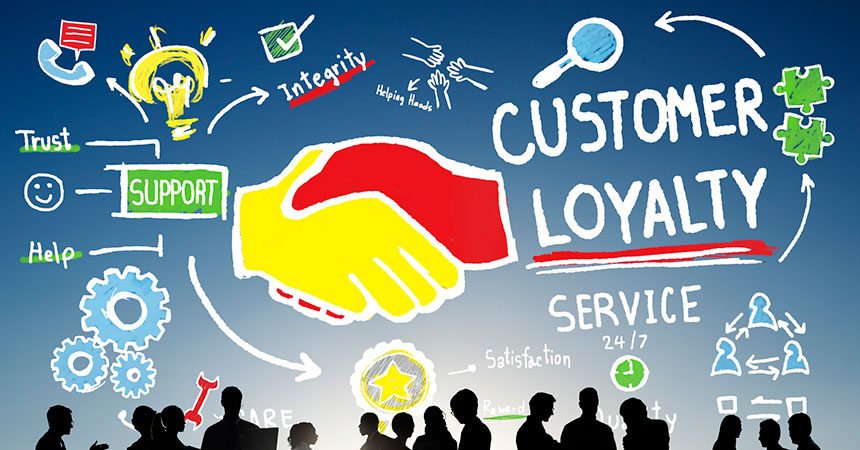
Marketing to existing customers with the promise of perks and incentives is called loyalty marketing. The intent is to encourage repeat business from pre existing customers instead of continually finding new customers, which takes more resources. For organizations that are trying to increase their revenue and grow their business, loyalty marketing programs allow
There are many types of loyalty programs you can use in your business, including:
- Punch cards
- Subscription services
- In-store gifts
- Birthday and Anniversary Perks
- VIP/Member’s Only Perks
Let’s take a look at these five easy-to-implement ideas that will help you experience the benefits of loyalty marketing.
Punch Cards
One of the easiest ways to start with a loyalty program is to use punch cards. Many businesses, especially in the food and beverage industry, use punch cards to track a customer’s patronage and incentivize them to purchase similar items in the future. The way they work is simple: Each time a customer makes a transaction, a cashier stamps the card or uses a hole-puncher (with a hard-to-repeat design) to fill up the slots on a card. Once the allotted number is achieved, the customer is rewarded with a particular freebie.
As a real world example, coffee shops thrive on repeat business, so they offer a goal-based program where customers can earn a free drink usually of their own choice after purchase X amount of coffees. This builds brand loyalty, especially because there’s an incentive to participate (and to avoid the less generous competitors—double win!). Punch cards also gamify the process of spending money, or open the opportunity to try new menu items… after all, it’s free, right?
With a rubber stamp and blank business cards, you can create your own custom loyalty cards. Alternatively, you use a rubber stamp equipped with an image (i.e. your company’s logo, a steaming cup of joe, etc.) to provide the stamps to prevent scammers from taking advantage of your generosity.
Subscription services
Another type of customer loyalty program is by using a subscription services to receive your products on a regular basis. With the possibilities of online shopping creating a type of “paradox of choice”, customers are looking for a trusted source to curate what they receive and simplify their life by narrowing their choices down to their tastes. Furthermore, you can give deals for your other products and service through the subscription, rewarding the customer for their continued usage of the service. For instance, if your business sells tea, you can include discount coupons or freebies at participating retailers.
The advantage of a subscription service is that your business continually pulls in regular sources of income. And, while it may be a bit of nefarious, also remember that some customers forget about their subscriptions as they get used to the regularity and convenience of it.
In-Store Gifts
Depending on your business model, you may want to try in-store gifts as a loyal program. In-store gifts can be sent out to your customers from mailers or email campaigns, urging them to visit your location to claim a gift or an exclusive discount. Often, businesses entice customers this way with limited-time giveaways, which can bring in business at the cost of whatever your business is willing to give away (known as a “loss leader”). Offering free gifts that promotes new products can get the attention of past customers while encouraging them to revisit your location and make more purchases.
One of the classic examples of in-store gifts is car dealerships giving away tools, like a set of screwdrivers, in exchange for showing up the car lot. Most people feel a little guilty about just showing up and taking a free item, so many will inadvertently browse the car lot. Out of those who do this song-and-dance, invariably a few might actually purchase a car—or, at the very least, come back in the future to see the inventory.
The first requirement of in-store gifts might seem like you must have a brick-and-mortar store, but if you have a dedicated ecommerce portal, you can offer discount codes to pass the typical paywalls (i.e “Enter codeword COFFEE for 20% at checkout”) and make this method work for your digital-only business, too.
Birthday and Anniversary Perks
Admit it: By the time you turn 18, your birthdays begin to get celebrated less and less. The same goes for anniversaries. The more time passing between the event, the more likely it is to be forgotten. Businesses that keep track of a customer database can use that information to attain a customer’s loyalty. Your spouse may forget, your immediate family might be too busy, but that ice cream shop down the road gives you a free ice cream cone just for being you!
Businesses can send out mailers with custom address stamps or send small gifts when your customers are preparing to celebrate an anniversary. Similarly, this can be a great way to build your customer database in the future—simply offer a free gift on certain days in exchange for their personal details. Usually, a clerk will verify the information (“it’s your birthday, eh?”), so if a person provides incorrect information, they may be less likely to come in the store and try to prove their identity.
VIP/Members Only Club
If you’ve ever spent some time at the airport, you’re acutely aware of those who get preferential treatment versus those who have to schlep along like the rest of us. A members-only VIP (“very important person”) club creates a type of exclusivity that rewards customers for using your business on a repeat basis. Some clubs require a minimum amount of purchases or signing up for adjoining credit cards, but your business’ VIP club does not have to cost your customers anything. Offering exclusive perks, like percentage-based discounts, free samples, and other ways to make a customer’s life easier (i.e. VIP lounge) can make your repeat customers choose your brand over others, especially if your competition doesn’t offer the same type of service.
* * *
As you can see, this article only touches on the possibilities of a customer loyalty program. By using your imagination and tried-and-true techniques, you can have your happy customers coming back, again and again.








